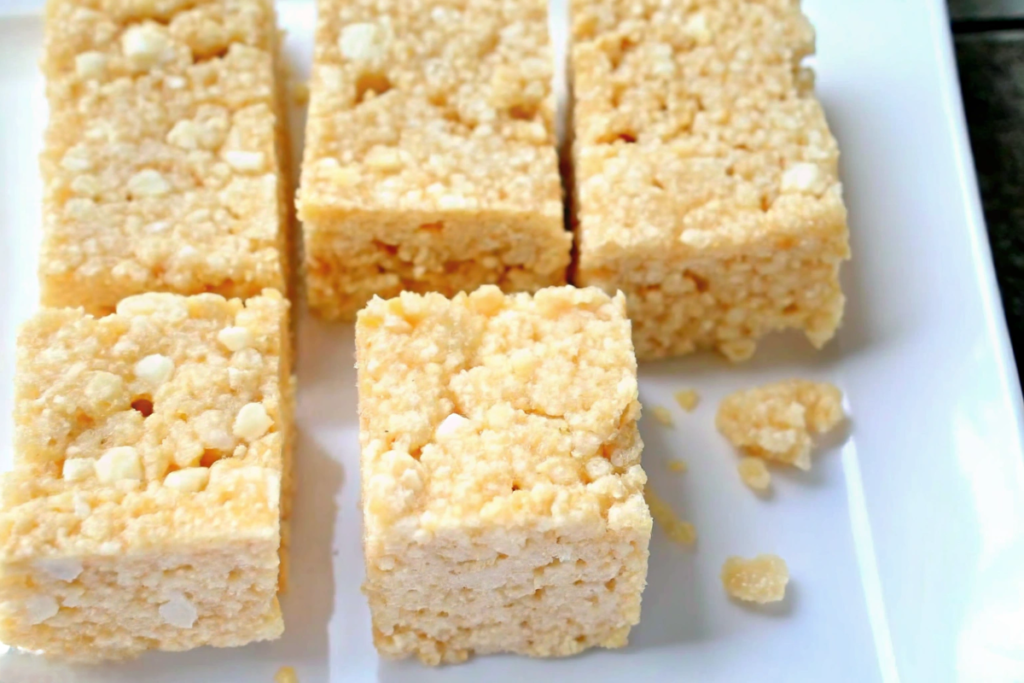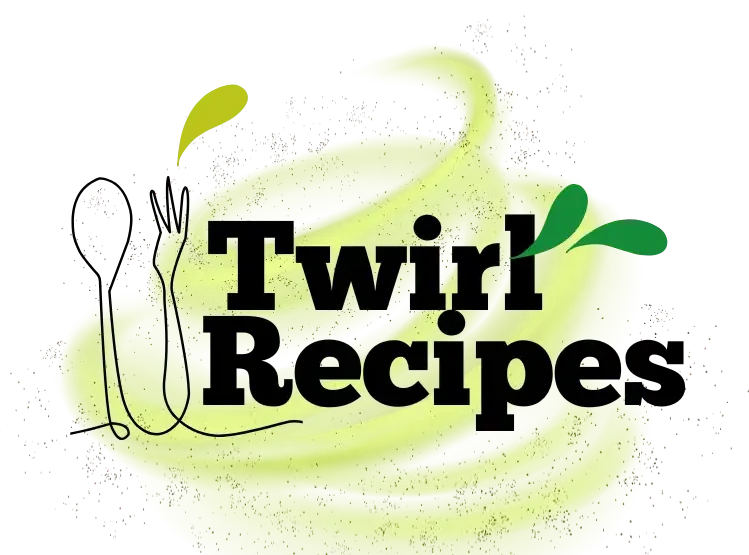Rice Krispies have been a beloved breakfast staple for decades, and their iconic snap, crackle, and pop is instantly recognizable. But if you’re on a gluten-free diet or have gluten sensitivity, you might be wondering, “Are Rice Krispies gluten-free?” Let’s dive into the details and uncover the truth about this cereal, plus explore some fantastic alternatives for a truly satisfying breakfast experience!
JUMP TO
What Are Rice Krispies?
Brief History of Rice Krispies
Rice Krispies, created by Kellogg’s in 1928, have stood the test of time as one of the most popular cereals worldwide. Known for their light, crispy texture and versatility, they’ve graced breakfast tables for generations. But what makes them so unique? It’s all in their puffed rice base and simple, wholesome taste. However, the question remains, are Rice Krispies gluten-free when you dig into their ingredients?
Ingredients in Traditional Rice Krispies
Now, let’s break down the ingredients in traditional Rice Krispies: rice, sugar, salt, and malt flavoring. While the recipe seems straightforward, it’s the malt flavoring that raises eyebrows. This ingredient is derived from barley, a gluten-containing grain. So, while the name might suggest a simple rice-based cereal, the inclusion of malt flavoring means traditional Rice Krispies are, unfortunately, not gluten-free.
Are Rice Krispies Gluten-Free? Understanding Gluten and Its Sneaky Sources
Understanding Gluten and Its Sources
Let’s break this down, shall we? Gluten is a group of proteins found in certain grains like wheat, barley, and rye. While it’s harmless for most folks, it can cause significant issues for those with celiac disease or gluten sensitivity. Even a tiny trace of gluten can wreak havoc on their health, which makes identifying gluten sources crucial.
When you hear about malt flavoring, it might not immediately ring alarm bells, but it’s often derived from barley—a definite no-no for anyone avoiding gluten. Barley is tricky because it’s not always labeled as clearly as wheat, which is why understanding food labels is such a big deal.
Analysis of Rice Krispies Ingredients
Here’s where things get interesting. While rice is naturally gluten-free, the addition of malt flavoring in traditional Rice Krispies changes the game. That little dash of flavoring disqualifies them from being labeled as gluten-free. For individuals following a gluten-free diet, this is a dealbreaker. It’s a shame, since the question “Are Rice Krispies gluten-free” is often asked by families trying to cater to gluten sensitivities. But don’t despair! In the next section, we’ll explore some exciting alternatives that are just as crunchy and delicious.
Gluten-Free Alternatives to Rice Krispies
If discovering that traditional Rice Krispies aren’t gluten-free has you feeling a bit deflated, don’t worry—there are plenty of amazing gluten-free alternatives out there! Whether you’re looking for store-bought options or want to get creative in the kitchen, there’s something for everyone.
Gluten-Free Brands to Try
Thankfully, several brands offer cereals that are just as crispy and satisfying as Rice Krispies but without the gluten. Here are a few fan-favorites:
- Nature’s Path Organic Crispy Rice Cereal
This brand is certified gluten-free and uses organic ingredients, making it a healthy and safe option for those avoiding gluten. - Erewhon Crispy Brown Rice Cereal
Made with simple ingredients, Erewhon’s cereal has a light, crunchy texture perfect for breakfast or dessert recipes. - Barbara’s Puffins
While not a direct replacement for Rice Krispies, their puffed cereals are a popular choice for gluten-free diets.
These brands ensure there’s no risk of cross-contamination with gluten-containing grains, which is critical for those with celiac disease or severe gluten sensitivity.
DIY Gluten-Free Rice Krispies
Feeling adventurous? You can make your own gluten-free Rice Krispies at home! All you need are some basic ingredients and a bit of time. Making your own ensures you can definitively answer the question, are Rice Krispies gluten-free, for your batch.
Ingredients
- 3 cups gluten-free puffed rice cereal
- 1/4 cup honey or maple syrup (as a natural sweetener)
- 1/4 cup nut butter (such as almond, peanut, or sunflower seed butter)
- 1 teaspoon pure vanilla extract
- A pinch of salt
Instructions
- In a medium saucepan, heat the honey (or maple syrup) and nut butter over low heat. Stir constantly until the mixture is smooth and combined.
- Remove the saucepan from heat and stir in the vanilla extract and salt.
- Pour the gluten-free puffed rice cereal into a large mixing bowl.
- Gradually add the warm honey-nut butter mixture to the cereal, stirring gently to coat evenly.
- Press the mixture firmly into a greased or parchment-lined pan using a spatula or the back of a spoon.
- Allow it to cool completely at room temperature or place it in the fridge for quicker setting.
- Once set, cut into squares or bars and enjoy!

This homemade version is quick, easy, and ensures that every ingredient is gluten-free. Plus, you can tweak the recipe to suit your taste buds—add a drizzle of chocolate or sprinkle in some colorful toppings!
Nutritional Content (Per 100g)
Here’s a breakdown of the estimated nutritional value per 100g of these gluten-free Rice Krispies treats:
| Nutrient | Amount (Per 100g) |
|---|---|
| Calories | 420 kcal |
| Protein | 7 g |
| Total Fat | 14 g |
| Saturated Fat | 2 g |
| Carbohydrates | 65 g |
| Sugars | 24 g |
| Dietary Fiber | 2 g |
| Sodium | 150 mg |
Why Gluten-Free Matters for Some People
For many, the words gluten-free diet might seem like a trendy lifestyle choice. But for others, avoiding gluten isn’t optional—it’s a vital part of maintaining their health and well-being. Let’s explore why going gluten-free is more than just a preference for some people.
Celiac Disease and Gluten Sensitivity
Celiac disease is a serious autoimmune condition where consuming gluten triggers the immune system to attack the small intestine. Therefore, this can lead to nutrient malabsorption, digestive issues, fatigue, and even long-term complications if left untreated. In addition, for those with celiac disease, steering clear of even the smallest trace of gluten is non-negotiable.
Similarly, individuals with non-celiac gluten sensitivity may experience symptoms like bloating, headaches, or joint pain when they consume gluten. Although the reaction isn’t autoimmune, it’s still uncomfortable enough to warrant eliminating gluten from their diet.
Why Gluten-Free Diets Are on the Rise
Beyond medical needs, many people are choosing to go gluten-free for other reasons, including digestive health and personal preference. In addition, gluten-free eating can encourage a focus on whole foods like fruits, vegetables, and naturally gluten-free grains, which may contribute to a healthier lifestyle.
Plus, with the growing availability of gluten-free alternatives, sticking to a gluten-free diet has become much more manageable—and even enjoyable. From crispy cereals to baked treats, the options are endless!
How to Identify Gluten-Free Products
Navigating the grocery store aisles while searching for gluten-free products can feel like a treasure hunt at first. But don’t worry—with a little know-how, you’ll become a label-reading pro in no time. Let’s explore some practical tips for ensuring the products you pick are truly safe for a gluten-free diet.
Reading Labels Like a Pro
Food labels are your first line of defense when it comes to spotting hidden gluten. Here’s what to look for:
- Ingredient Check: Scan the ingredient list for obvious culprits like wheat, barley, rye, or malt flavoring. Keep an eye out for less familiar terms like hydrolyzed wheat protein or barley malt extract.
- Gluten-Free Statements: Many products now include a clear “gluten-free” label, which is regulated in countries like the U.S. to mean the product contains less than 20 ppm (parts per million) of gluten.
- Allergen Warnings: Check for “may contain” or “produced in a facility with wheat” statements. These indicate potential cross-contamination, which can be a concern for people with celiac disease.
Certifications to Look For
Certain certifications make identifying gluten-free products even easier. Look for trusted symbols like:
- Gluten-Free Certification Organization (GFCO): Their seal guarantees rigorous testing to ensure a product meets gluten-free standards.
- Certified Gluten-Free by NSF: Another reliable certification for avoiding gluten.
These certifications provide extra peace of mind, especially when you’re trying new products.
Tips for Enjoying a Gluten-Free Lifestyle
Transitioning to a gluten-free lifestyle might seem overwhelming at first, but with the right approach, it can be both manageable and enjoyable. Let’s explore some practical tips to help you thrive while avoiding gluten!
Easy Gluten-Free Swaps
One of the simplest ways to embrace a gluten-free diet is to replace common gluten-containing foods with gluten-free alternatives. Here are some quick swaps:
- Bread and Pasta: Replace wheat-based options with gluten-free bread or pasta made from rice, quinoa, or chickpeas.
- Flour: Use almond flour, coconut flour, or a pre-mixed gluten-free blend for baking.
- Snacks: Swap crackers and cookies for gluten-free versions, or opt for naturally gluten-free snacks like nuts, seeds, or popcorn.
- Soy Sauce: Use tamari, a gluten-free alternative that tastes almost identical.
With so many options available, you’ll hardly notice the difference in your meals and snacks!
Maintaining a Balanced Gluten-Free Diet
Eating gluten-free doesn’t mean sacrificing nutrition. Focus on whole, naturally gluten-free foods to ensure you’re getting all the nutrients you need.
- Incorporate Whole Grains: Add grains like quinoa, amaranth, or millet to your diet for a hearty and nutritious boost.
- Load Up on Veggies: Vegetables are naturally gluten-free and packed with fiber, vitamins, and minerals.
- Don’t Forget Protein: Include protein-rich foods like eggs, beans, lean meats, and dairy (if tolerated) to stay energized.
Staying balanced is key to feeling great while enjoying all the benefits of a gluten-free diet.
Wrapping Up: Are Rice Krispies Gluten-Free?
While traditional Rice Krispies aren’t gluten-free due to their malt flavoring, there are plenty of alternatives and homemade options to enjoy. Whether you’re choosing certified gluten-free cereals or whipping up your own crispy treats, living a gluten-free lifestyle doesn’t mean sacrificing taste or texture.
Embrace the journey with confidence—read labels carefully, try new recipes, and explore all the delicious possibilities. Have questions or tips to share? Let us know in the comments below, and don’t forget to check out more gluten-free recipes on our site!
FAQs About Gluten-Free Foods and Rice Krispies
Can I Make Gluten-Free Rice Krispies Treats at Home?
Absolutely! Combine gluten-free puffed rice, marshmallows, and butter (or dairy-free alternatives). It’s a quick, easy, and safe way to enjoy this classic snack.
What’s the Difference Between Puffed Rice and Rice Krispies?
– Ingredients: Puffed rice is plain rice, while Rice Krispies contain added sugar, malt flavoring, and salt.
– Texture: Puffed rice is light and airy; Rice Krispies are crispier and slightly sweet.
– Preparation: Puffed rice is made by heating rice directly; Rice Krispies involve a cooked and toasted rice dough.
How to Make Puffed Rice?
To make puffed rice:
1- Dry cooked rice completely.
2- Heat oil in a deep pan to 350°F (175°C).
3- Drop dried rice into the oil—it will puff up instantly.
4- Remove with a slotted spoon, drain on paper towels, and season as desired.
Is Peanut Butter Gluten-Free?
Yes, most peanut butter is gluten-free, containing just peanuts and salt. However:
– Check for gluten in flavored or low-fat varieties.
– Ensure the product is labeled “gluten-free” to avoid cross-contamination.
Brands like Skippy and Jif are safe options when verified on the label.

